A nger raiseth invention, but it overheateth the oven. George Savile, Marquess of Halifax | Getting Savvy about
Your Emotional Side |
T he word emotion comes from the Latin motivus and is thus a close semantic relative of motivation. Literally, emotion means to move around or to agitate. Both motivation and emotion suggest action, in the sense of a state that is the opposite of standing still or being calm and laid back. This action is related to an individuals goals: motivation is action in pursuit of a goal, whereas emotion is action resulting from situations that enhance or threaten a goal. Hence, to the degree that Im motivated, Im pursuing a goal. To the degree that Im emotional, Im perceiving either a threat to my goal (negative emotion) or significant progress toward my goal (positive emotion). Or, I could experience conflicting emotions: joy that my grandson has come to visit, and stress (in this case, probably a combination of anger and sadness) that Ill have to stay up late in order to finish a project due early tomorrow.
Emotions werent the subject of serious study by cognitive scientists until recently. This field of study is still young, and several theories compete for followers. I have included here the material that appears most compatible with the overall direction of cognitive research.
A review of several major works on the theory of emotions (Lazarus, 1991a; Plutchik and Kellerman, 1989; J. G. Thompson, 1988) suggests a five-step model to describe what might happen to someone during an emotional situation:
1. The event. Something happens (a remark, a gesture, an accident) that potentially relates to one of the persons goals as either a threat or an enhancer.
2. Perception of the event. The individual becomes fully aware of the event (for example, through seeing, hearing, or reading).
3. Appraisal of the perceived event. The person determines whether or not the event relates to a goal. The value of the goal will directly affect the strength of the emotion.
4. Filtering of the appraisal. The status of the persons body (e.g., sleepy, alert) influences the intensity of his appraisal (for instance, very threatening or only mildly threatening). This filter can include past events with a strong emotional association. For example, the first funeral I attended was also my first introduction to the fragrance of gardenias. Now, for me, the scent of gardenias still gives any event an undertone of melancholy. Joseph LeDoux (1996) writes extensively of this memory-emotion relationship.
5. Reaction to the appraisal. The person channels her appraisal into some form of coping (from the Middle French couper, to strike or cut). The strength of the reaction is a direct function of the value of the goal concerned and the degree of certainty that the event will thwart or enhance attainment of that goal.
Applications
 Know that the reaction to the appraisal (step 5) can be either cognitive or emotional. Normally, when goals appear to be thwarted or enhanced by an event, emotions precede cognitions. These emotions can last for less than a second or for a lifetime, partly depending on whether we decide to will the cognitive part of the reaction to subdue the emotional part. See Seligmans ABCDE technique (topic 34.7) for ways to cognitively short-circuit a disturbing emotional event.
Know that the reaction to the appraisal (step 5) can be either cognitive or emotional. Normally, when goals appear to be thwarted or enhanced by an event, emotions precede cognitions. These emotions can last for less than a second or for a lifetime, partly depending on whether we decide to will the cognitive part of the reaction to subdue the emotional part. See Seligmans ABCDE technique (topic 34.7) for ways to cognitively short-circuit a disturbing emotional event.
 Analyze events and filters, and look past situations for patterns. (Contributed by Rick Bradley)
Analyze events and filters, and look past situations for patterns. (Contributed by Rick Bradley)
 Put up these mottos:
Put up these mottos:
We are disturbed not by things, but by the views we take of things.
Epictetus , The Encheiridion
There is nothing either good or bad, but thinking makes it so.
William Shakespeare, Hamlet
The notion that the mind serves as a kind of gatekeeper for emotional behavior is at the core of the cognitive theory of emotions. The opposing theory, developed earlier in the last century, is that a person reacts automatically, without mental intervention, whenever certain emotion-evoking stimuli appear. A consensus is emerging that events with the potential to elicit emotional responses must first pass the appraisal activity of the mind. This appraisal activity is typically rapid. It may have several components and may be sequential or simultaneous, but researchers agree that it takes place between stimulus and response. When we receive news from our environment, it is neither good nor bad until our appraisal process has passed judgment.
Antonio Damasio (1994) has written an entire book exploring the appraisal process. The thrust of it is startlingly unexpected: he says that rational decision making and planning cannot occur without access to the emotions. In dozens of ways, Damasio illustrates the point that emotions are necessary for reasoning to occur. Studying patients with brain damage that had severed the frontal reasoning area from the amygdalas emotional resources, he found that these patients performed normally on traditional intelligence tests but were unable to plan and make rational decisions. They appeared to be locked into the present and past. Damasio explains it this way: People form dispositional representations (such as traits, values, opinions, and schemas) over time; these representations are linked to somatic markers that register pain or pleasure when the representations are activated. His brain-damaged patients who were unable to experience their somatic markers couldnt make decisions. They were stymied, with no gut-level pointers to favor one alternative over another. They were unable to anticipate future pain or pleasure in connection with specific alternatives. With their decline in emotion came a concomitant decline in reasoning. Or, as Damasio put it, The powers of reason and the experience of emotion decline together (p. 77). Far from being an unwelcome intrusion or a supernumerary mental faculty (p. 75), the emotions are inextricably linked to rationality as the critical link in evaluating our perception of everyday events.
Reason generates the list of possibilities. Emotion chooses from that list.
Wrangham and Peterson, Demonic Males
Lazarus (1991b, p. 827) has identified six ingredients that comprise the act of appraisal:
1. Goal relevance. Does this news relate to one of my goals or values?
2. Goal congruence or incongruence. Does this news serve to enhance or thwart my goal or value?
3. Goal content. How is my ego involved? (The answer helps to tap the relevant emotional responsefor example, anger vs. guilt).
4. Source of blame or credit. Where does the responsibility lie, with me or thee?
5. Coping potential. Can I handle the consequences of this news or event?
6. Future expectations. Will things get better or worse?
Lazarus calls the first three elements primary appraisal and the last three secondary appraisal. Lazaruss secondary-appraisal elements resemble Seligmans three elements of learned optimism: personalization, pervasiveness, and permanence (see topic 34.5).
These six interventions control the gate that determines whether or not a perceived event leads to an emotional response. In reading the manuscript of this book, Rick Bradley commented that no one could use this appraisal process without a personal commitment to truth.
Applications
 Commit your goals to writing. Document situations that promote or thwart goal attainment. Analyze for patterns. (Contributed by Rick Bradley)
Commit your goals to writing. Document situations that promote or thwart goal attainment. Analyze for patterns. (Contributed by Rick Bradley)
Next page

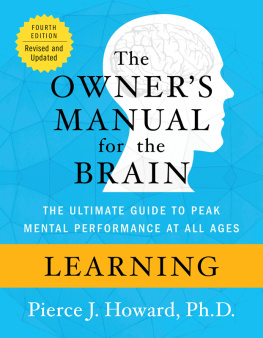
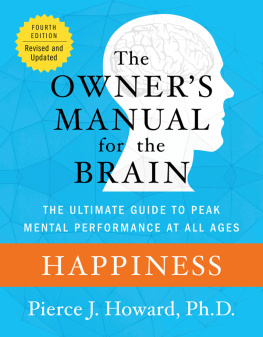
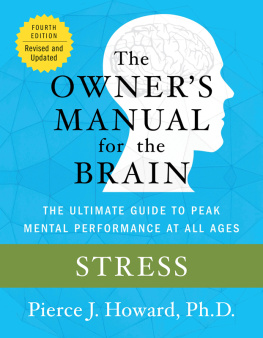


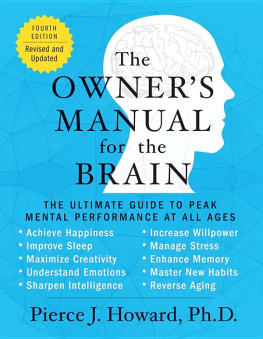
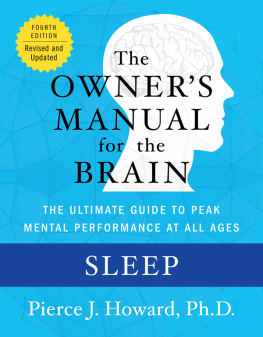

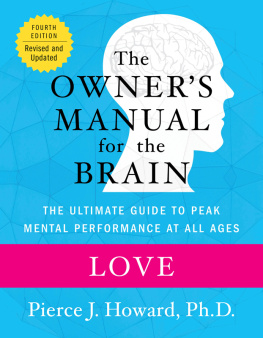

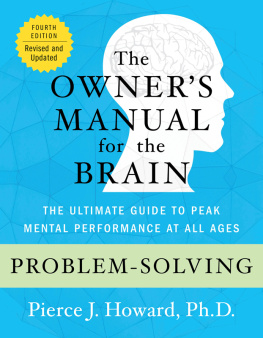

 Know that the reaction to the appraisal (step 5) can be either cognitive or emotional. Normally, when goals appear to be thwarted or enhanced by an event, emotions precede cognitions. These emotions can last for less than a second or for a lifetime, partly depending on whether we decide to will the cognitive part of the reaction to subdue the emotional part. See Seligmans ABCDE technique (topic 34.7) for ways to cognitively short-circuit a disturbing emotional event.
Know that the reaction to the appraisal (step 5) can be either cognitive or emotional. Normally, when goals appear to be thwarted or enhanced by an event, emotions precede cognitions. These emotions can last for less than a second or for a lifetime, partly depending on whether we decide to will the cognitive part of the reaction to subdue the emotional part. See Seligmans ABCDE technique (topic 34.7) for ways to cognitively short-circuit a disturbing emotional event. Analyze events and filters, and look past situations for patterns. (Contributed by Rick Bradley)
Analyze events and filters, and look past situations for patterns. (Contributed by Rick Bradley) Put up these mottos:
Put up these mottos: